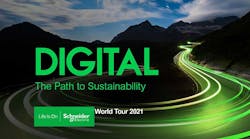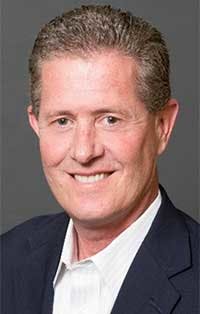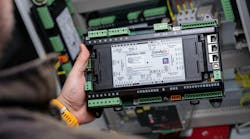Data Center Insights: Frank Nash of Schneider Electric
The Data Center Frontier Executive Roundtable features insights from industry executives with lengthy experience in the data center industry. Here’s a look at the insights from Frank Nash of Schneider Electric.
Here’s the full text of Frank Nash’s insights from our Executive Roundtable:
Data Center Frontier: What will delivery timetables for new data center capacity look like in 2023? Will the combo of supply chain issues, power constraints and staff shortages have an impact on supply?
Frank Nash: From the manufacturers’ perspective, we expect that delivery timetables for new data center capacity will vary widely across the broader service provider network. Service providers who foresaw the impact of supply change challenges early and moved quickly to secure supply through buying/capacity agreements will be in the best position to deliver new capacity most effectively.
The industry experienced a “perfect storm” in 2022 with a massive increase in demand, coupled with significant supply chain disruption, that has created a “Hunger Games” environment. We expect lead times to remain extended into 2023. However, based on an expected gradual recovery of the supply base, lead times should improve as the year progresses. Constrained supply in electronics (microchips) will continue until new semiconductor fab production capacity is brought online in the next few years.
Power constraints are already inhibiting delivery of new data center capacity, most notably in the Northern Virginia corridor. Utility capacity limitations coupled with extended large transformer lead times are expected to continue throughout 2023 and, in some regions, well into 2024. Shortages in skilled labor, both in the contracting trades and in facility management, have been problematic even prior to COVID lockdowns. We expect labor shortages to slow delivery of new data center capacity in 2023. That said, more widespread deployment of prefabricated modular solutions that allow for offsite fabrication will help to mitigate the impact of trade labor shortages.
Data Center Frontier: What’s the state of the edge computing market, and how does it compare to your expectations? What are the use cases that are gaining traction?
Frank Nash: There is little debate that the more devices become “smarter” and/or “connected” that the increased proliferation of data will require faster networks and localized compute resources to manage it. Think of it as the Chicken and the Edge! Currently the infrastructure (such as networks, fiber, 5G technology, interconnects, and micro data centers) is being built out which will enable the use cases everyone is talking about.
It doesn’t mean the death of centralized cloud by any means, but it does mean we will operate in a hybrid world of both centralized and decentralized cloud. Some may call it “Edge Cloud.” The fact is that there will be multitudes of compute resources in multitudes of places and not just many in one place (hyperscale). It is becoming the internet of EVERYTHING, not the internet of things as we see the hyperscalers moving out to the edge.
Data Center Frontier: How would you assess enterprise IT demand, and what do you see ahead in 2023?
Frank Nash: We expect to see significant growth in IT and Network infrastructure in the small and midsize business (SMB) and state, local, and education (SLED) markets -so much so that we’ll see a higher degree of focus on these markets from HPE, Cisco and others. We’re also hearing of numerous instances where enterprises, who may have “overbuilt” in the cloud, are scaling back and even repatriating applications from cloud to on prem.
Yet, we also see companies committing to 100% cloud (FedEx) so we expect to see a continuation in hybrid environment deployments as we alluded to in our observations on the Edge. Lastly, recent programs and government funding are fueling significant investment in the K-12 and SLED space so opportunities will abound as educational systems invest heavily in upgrading and expanding their IT capabilities.
Data Center Frontier: What will be the important themes in sustainability in 2023 for data centers and cloud operators?
Frank Nash: Over the past 15 years, the data center industry has helped lead the private sector in both sustainability ambition and action. Power Use Effectiveness has fallen precipitously over that period, all while data center operators have ramped up procurement of renewable energy to power remaining loads. Today, carbon neutrality and net-zero goals are common across the industry as data center companies seek pathways to continue to grow, and to do so sustainably.
Data center operators are facing external conditions that they may not have counted on when designing existing data centers, and that are constraining the design and location of new ones. The industry is looking for new solutions that will make it more resilient to the effects of climate change.
Increasingly, data center operators are being forced to contend with the effects of climate change even as they work to fight it. Water scarcity is a good example of this. Currently, data center operators have trouble siting new facilities in areas where there is competition for water resources. Arizona is a hotspot for data center development, and municipalities there are passing ordinances that allow them to turn down requests for water withdrawals if they don’t feel that they’re aligned with local priorities.
We’re seeing the same thing worldwide as local communities become more protective over their water resources. Data center operators need to look at how drought is affecting power availability in the areas where they are building. Water is a key element throughout our energy system, and when we are dealing with drought, our ability to produce energy gets squeezed in a hundred different ways. Our customers tell us that power availability has become a major driver for data center placement, and the industry needs to track how drought may affect this.
Extreme heat and severe weather have similarly presented increasing challenges to the design, location, and operation of data centers, and the threat is likely to continue to grow in the near future.
Data center operators need to convince their host communities and countries that they are part of the solution -- and not just competitors for scarce energy resources. We believe that a new, cleaner, and more resilient energy system is possible, and digitization will be at the heart of it. All digital solutions, of course, run through data centers.
About the Author




